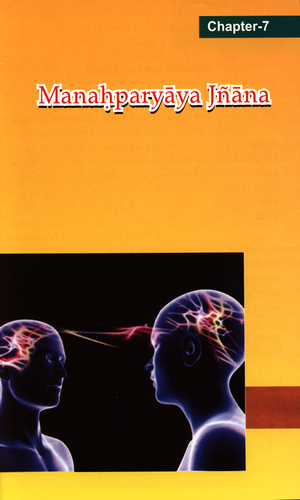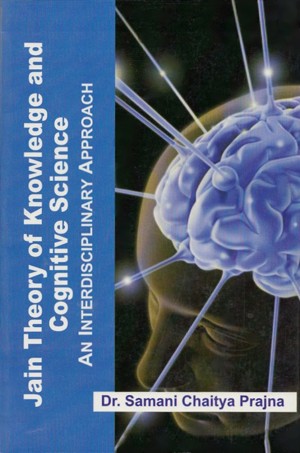
There are three basic problems of mind, they are: Nature of the mind, Mind body relation and Knowing the other's mind. In the theory of mind the most debated area is that area with in Western philosophy of mind, which devotes itself to the issue of third-person psychological understanding. According to science to know or read the state-of mind of a other being, objective mapping of mind required, that can give a structure for the subjective analysis. This means reading others mind on more mechanical and unbiased grounds.
Modern mechanical development has brought in light such valuable tests as MRI (Magnetic Resource Imaging), in which a sophisticated software system called Computerized Tomography, converts radio signals in three dimensional, PET (Positron Emission Topography) and EEG (Electro-encephalography) have been quite successful in mapping and to figure-out the mental states of a being. Such a kind of figuring-out is possible through advanced picture of any part of the body- functional MRI, PET.[1]
It is possible even through advanced spiritual development. Jain epistemology discusses about five kinds of cognition, out of which the fourth is a state of spiritual development where one directly reads maps of other's mind[2]. The maps which a mind reader cognizes are made up of special material aggregate present in nature technically called mano vargaṇā. Thus, it is possible for a cognizer to figure out and analyse those figures of mental substance and infer the exact state of mind of a thinker. In order to dive into the deeper concepts of mind reading and mind mapping, we will have to get to know about mind and thought process from the Jain point of view.
7.1 Mind Reading in Cognitive Psychology
How do I know that x is happy is the debate between two theories - The Basic Theory and the Simulation Theory - about the nature and basis of our understanding of other minds. According to the basic or fundamental theory our ability to understand each other is theory-driven; it depends on a theory of mind. Now, there are many versions of this claim, depending on the nature of the theory of mind said to be involved in psychological understanding. One common version is that the theory of mind deployed in psychological understanding is a functionalist-style folk psychological theory, containing generalisations about the inter-relations between mental states, external stimuli and behavioural manifestations. Common people or the folk, have -this theory tacitly working in the background of their day-to-day predictions about each other.[3]
Let us take an example. Suppose one of us is appearing in an interview for a job and there is a panel of interviewers asking all sorts of questions. Obviously, the interviewee will try to read the minds of the panellists and to predict the routes in which their thoughts will travel. There is an evolutionary advantage in being able to predict and explain the thoughts and actions of others. Now, the question is, how will our interviewee proceed with the task of mindreading? According to the Theory theory, she is already in possession of a theory of mind containing generalisations linking one thought to another or one thought to some action or even linking external situations to mental states. For example, the interviewee may be able to gauge (using one or more generalisation and taking hint from situational cues as well as behavioural gestures) that one of the panellists is signalling to bring an end to the interview or she may be able to guess from a certain question that has been posed that the panellist will lead on to another question on a closely related topic. If the interviewee is not nervous and if she is adept at using the theory of mind at her disposal, then she might even be able to manipulate the interview to her advantage by providing responses, which (if picked up by the panellists) can act in her favour.
But the Simulation Theory has a different story to tell. According to it, we understand others not by deploying a theory of mind but by simulating their mental states. Since we all possess minds, we are naturally endowed to understand other minds. In order to understand others, we need not follow any indirect, inferential method like the method of theory-deployment. Our understanding of others, according to (one version of) the Simulation Theory, is direct, first-personal and imaginative (Gordon, Guha).
Mental simulation is different from theory of mind deployment in many ways. Simulation is a first-order (some say representational') psychological activity whereas theory-use is a higher-order (some say 'meta-representational') psychological activity. That is because in simulating others we are only required to think about the world from someone else's point of view, which boils down to saying that in simulation, we are only required to engage in thinking about things as we normally do. But in applying theory, we need to engage not merely in thinking about things but in thinking about other's thoughts about things. Moreover, unlike simulation which is first-personal, theory-use is third-personal. The Theory treats the human mind as a part of a large causal-mechanical framework and so explains psychological phenomena in the same way in which other natural phenomena may be explained ae in a detached, third-personal manner (heal).
In the interview-example, the candidate can succeed in predicting the interviewer's train of thoughts. If she shifts her position in her mind and occupies the interviewer's place in her imagination. This quiet change in psychological perspective can provide her with the much-needed insight into the interviewer's mind. Since she will then be in a position to look at the interviewer's thoughts in much the same manner as she would see her own self from a first-person point of view. This is mental simulation. If one notices carefully, the notions in play at this point, one will easily be able to see that in mental simulation, the simulator tries to identify with the target.
The Simulation Theory has many historical roots but two philosophers, Robert Gordon and Jane Heal, formally introduced it in its present form in 1986 in two separate and independent articles. Let us not conclude that the Simulation Theory is a homogenous system claims about the nature of psychological understanding.
The process of simulation can be traced as follows:
Fig No.7.1. Process of Simulation
The thinker thinks of an object.
↓
The reader observes the situation of the thinker
↓
The reader identifies himself with the thinker
↓
The reader simulates the situation with the thinker
↓
The reader infers about the thought by the thinker.
From Jain's point of view mind is an independent entity from that of an consciousness. It is also known as quasi-sense (anindriya) [4]as it is dependent on senses. The object of mind is not fixed as senses. It is capable of apprehending objects of all the sense organs, of all the periods of time. Like senses mind is divided into two varieties the physical all the mind (dravya mana) and psychical mind (bhava mana). As explained in Sarvārthasiddhi "mano dvividhaṁ - dravyamano bhāvamanaśceti "[5] There are two types of mind-physical and psychical. The physical mind is material, constituted of Manovargaṇā. It occupies the whole body. The Digaṁbara (Jains) admit the heart as its abode; and of the shape of lotus with eight petals. The psychical mind (bhāvamana) the power or activity of the self-resulting into various states of mental actions, this is mode of soul and so beyond the reach of imperfect (ordinary) cognition.
Jain epistemology explains about three kinds of direct cognition out of which the second is known Manaḥparyāya jñāna. It is been translated thought reading and more commonly as mind reading[6]. Manaḥparyāya jñāna or mind reading[7] is an unique contribution of Jain Philosophy to the Indian thought. It is also called as manahparyava or Manaḥparyāya. The terms paryava and pāryaya express the sense of thought reading, pāryaya means modes of mind and the cognition of these modes of mind is called Manaḥparyāya jñāna as quoted in Viśeṣāvaśyaka Bhāṣya[8] Mind reading is also been defined by Acarya Tulasi as:
manodravyaparyāya prakāśī manaḥparyāyaḥ.[9]
'Mind reading (cognition of mental modes) is the revealed of modes of mental substance.'
In other Indian philosophies too, as in Buddhism and yoga school, such kind of knowledge or cognition is possible as Majjhimnikāya of Suttapītaka describes certain rules of conduct to be observed by Bhikkhu if he desires some accomplishments natural as well as supernatural. Amongst the supernatural powers the cognition of all varieties of mind is also referred but it does not indicate the objects conceived by the mind as the subject-matter of that cognition.[10]
In Yoga philosophy too, it is explained that one can know of other's mind by concentrating on one's mental activities. As one can know one's own mind one can also know about other's mental conditions. Such a kind of cognition is known as 'paracit jñāna'. Through this ability one can know about the mental conditions and various emotions of him, i.e. anger, greed etc. but cannot trace out the object of anger and the like.[11]
A kind of mind reading is also been explained through Para-psychology. The concept of Telepathy is quite similar to that of mind reading because through telepathy one can get in to contact with other's mind where the person who is been contacted may remain totally unware. Dr. Baina in his book 'Anatomy of Modern Science' says there is some medium through which one can enter into other's mental life.
The cognition, which cannot be acquired by thought can be known through mental projections. But this concept of telepathy cannot be equated with Jain concept of mind reading. The uniqueness in concept of mind reading lies in procedure of it and not just a concept itself and is nor too subjective as telepathy. It is rather more reliable and unbiased as it involves objective scanning or mapping of the mental states.
The objective scanning of mental states can be done by two methods:
1. With the help of advanced technological machinery.
2. Through mapping of mind, which is possible at higher stage of spiritual development.
Until recently the mechanizations that give rise to our thoughts memories feelings and perceptions were impossible to examine directly. Their nature could only be inferred by observing their effects. Now, however new imaging techniques make the internal world of mind visible much as x-rays reveal our bones. As we enter the twenty-first century, functional brain scanning machine are opening up the territory of mind rather as the first ocean-going ships once opened up the globe.[12]
The challenge of mapping mind is in locating precise brain activity that creates specific experiences and behavioural responses is currently engaging some of the finest scientists in the world. These discoveries in a way that will make them comprehensible even to those with no cognition of specific interest in science.
7.2 Mind Reading through Jain Spiritual Methodology
Process of mind reading through mind mapping, though spiritual attainment as Jinabhadra explains Manaḥparyāya apprehends or scans different modes of mental substance i.e. mental structure is quite interesting. This makes the knower to conceive the cognized objects. According to Jinabhadra-[13]Mana pāryaya apprehends different modes of mental substance, i.e. mental structure. The objects conceived are not cognized here but later on inferred by Mati jñāna inference as reflected in the Viśeṣāvaśyaka Bhāṣya:
Is such kind scanning or mapping of mind is possible?
It is possible because Jain philosophy admits two kinds of minds:
Physical mind (dravya mana).
Psychical mind (bhava mana)[14]
The physical mind is a material composition made of molecules of Manovargaṇā - A material aggregate related to mind. It occupies the whole body. The Digaṁbara tradition admits the heart as its abode and of the shape of a lotus with eight petals.[15] In simpler words, the substantial or physical mind is nothing but substantive matter transformed into mental substance. The physical mind changes and takes various forms according to the impressions. Every idea of a thinker puts some mark on it. Sometimes it is very intense and sometimes not. The intense one's may be so deep that they are visible on external body too.[16] For instance, the face of angry man is reddened. His body trembles and so on. When the feeling is not so intense or is merely of the nature of cognition, it is not externally visible. But it cannot escape from the physical mind; which catches the impression of every idea and feeling however feeble it may be. The psychical mind however is a mode of the soul in the state of deliberation. It is immaterial like soul and thus, it is beyond the reach of manahparyava jñāna,[17]
How the physical mind is perceived when It is beyond the reach of senses. If it's function is confined to the conceived objects, there is no cognition to perceive the mind substance. The alternative is only that it can be left unperceived but this also is unthinkable. Without the acceptance of physical mind the conceived ideas cannot be cognized. Akalanka gives a way out to this difficulty by accepting the mental substance also as the object of Manaḥparyāya in its first stage, the subsequent stage being the cognition of conceived objects. One is direct, while the other is indirect but constitute one cognition.[18]
According to Mahābandha[19] and Dhavalā, Mind reading is cognition of another's desire (jamina) memory (smṛti) Intellect (mati), Deliberation (cintā), Life (jīvita), Death (Maraṇa), Gain (Lābha), Loss (Alābha), Pleasure (Sukha), Pain (Dukha) the destruction of city (Nagaravināśa) the destruction of district (Deśavinaśa) the destruction of a province (Jan apaviṁsa) etc. This accounts makes the distinction Avadhi and Manaḥparyāya in signification.
If we have to decide whether Manaḥparyāya by nature, is a direct cognition or indirect one. By direct, we do not mean here subjective directness or independence from assistance of senses, but the objective presentation or direct apprehension. If it is a direct cognition as we must confine its sphere of objectivity to physical mind only. Conceived ideas on no account can be presented directly. If it is indirect, we must admit the conceived ideas as its object. The questions of the object being material substance does not arise in this case. We can know the soul and other immaterial substance through inference i.e. indirectly.[20] Thus, the main object is not the material mind but immaterial thoughts and material mind is just an instrument to reach to the immaterial ideas or thoughts.
Patañjali also describes the physical powers produced by the practice of yoga and by concentration on mind of other person, one is able to know one's mind. The object conceived by that mind is not perceived, because that is not the object of concentration.[21]
Two types of Manaḥparyāya
Manaḥparyāya is divided into two types ṛjumati and vipulamati. The difference between the two is not of quality but that of degree. Vipulamati apprehends the objects more minutely than ṛjumati. Secondly, it is infallible while the latter is subject to fall or disappearance[22]. Jinabhadra holds ṛjumati and vipulamati differ from each other in respect of subject matter also. ṛjumati apprehends an object in its simple form Vipulamati cognizes the same with more particulars for instance, in apprehension of a mind the cause of Manaḥ paryāya. Manaḥparyāya is not natural. It is always supernatural. It is enumerated in the eight powers (labdhis) through yoga. The yoga sutra states that knowledge of other's mind is obtained through concentration on them.
The Majjhimnikāya proposes that if a bhikkhu desires to know others mind, he should completely obsessive rules of conduct (śīla) restraint from sensual pleasures (śamana). Concentration and cognizance (vipaśyanā) and should stay in deserted houses. These practices are not particular for attaining the power of thought-reading only but, general conditions for all sorts of supernatural powers. Pūjyapāda accounts manaḥparyāya to four factors.[23]
In terms of modern psychology we can say that ṛjumati is competent to apprehend the conscious mind-only. Vipulamati is competent to map subconscious and unconscious mind also.
Thus, it can be concluded that the concept of Manaḥparyāya jñāna or mind reading in Jainism possesses in itself a unique explanation. The uniqueness of mind reading from other philosophical school lies in the process of reading mind. It holds that reading other's mind is not only subjectively done process but an objective mapping is also necessary. Thus the process of mind reading can be traced as follows:
Fig No. 7.2 Process of Mind Reading in Jainism
The thinker thinks of an object.
↓
The thinker gathers the material aggregates
↓
The mental substance of thinker takes the form of an object
↓
It produces objective maps.
↓
The reader cognizes the maps or figures of mental substance of thinker.
↓
Depending on the details of mental substance, the reader infers about the object thought by the thinker
When compared with scientific method of mind mapping. It is quite similar to the method of Jainism. For Science, reading a mind however seems to be more mysterious. The human mind the so called Black box has been slow to give the secrets. Until recently the mechanization that give rise to our thoughts, memories, feelings and perceptions, mere impossible to examine! Their nature could only be inferred through effects. Locating the precise- brain activity that creates specific experience and behavioral responses is currently engaging some of the finest scientists in the world. Different types of brain cells secrete different neurotransmitters. Each brain chemical works in widely spread but fairly specific brain locations and may have a different effect according to where it is activated. Some fifty different neurotransmitters have been identified, more are expected to be found.[24]
When compared with scientific method of mind mapping, it is quite similar to the above stated method of Jainism which can be roughly figured as follows:
Fig No. 7.3. Process of Mind Reading In Science
The thinker thinks of any data.
↓
The brain gathers the materials
↓
The constitution of brain and nervous system changes For e.g. release of hormones and neurotransmitters
↓
it produces objective maps.
↓
These maps are traced out by different instruments
↓
The reader cognizes the maps or figures given by the instruments.
↓
Depending on the instrumental details, the reader infers about the object thought by the thinker
When all the procedures of mind reading; of psychology, Jainism and science are analysed, one can clearly see the similarity and differences between the systems. The process of mind reading through simulation is subjective in nature thus lacks accuracy. The process of mind reading through scientific equipment though objective and measurable but has its limitations of instruments, whereas the process of mind reading through subjective experience is based on objective mapping. Thus, it has a complete accuracy but independent of equipment. There is marked similarity between procedure of mind reading in science and Jainism. The similarity lies in the involvement of material maps to infer the real state of mind whereas the difference lies in the instrument used for mapping. In former the instrument the cognitive faculty called manahparyava jñāna acts an instrument where as in scientific equipment's in the later. Of course the procedure entering into other's mental states i.e. through mapping remains the same.
Nandi, 2.
' ṇāṇaṃ paṃcavihaṃ paṇṇattaṃ, tam jahā - ābhiṇibohiyaṇāṇaṃ, suyaṇāṇam, ohiṇāṇaṁ, maṇapajjavaṇāṇaṁ, kevalaṇāṇaṁ//"
There are other versions of the Theory, which are less folksy, less ommon-sensical. Indeed, some theory theorists dispute the claim that folk psychology can be a proper theory of mind. They insist on a more scientific foundation for psychological understanding and say that a neuroscientific or a connectionist model of theory would be a better candidate for this purpose. Since this paper is not in any way dependent on a full exposition of the Theory, we shall not go into further details but anyone interested may consult von Eckardt (1994).
Tattvārtha Rājavārtika of Akalanka, 1.14. 3-4.
Jain Siddhānta Dīpīkā of Acarya Tulasi, as Illuminator of Jain tenets, trans, by Prof. Satkarimukerji, 2.52
Indra Candra sāśtri, Jain Epistemology, ed. by Sāgaramala Jain, Parśwanātha Vidyāśrama Sodha Saṁsthāna, Varanasi, 1990, p. 350
Visesavasyaka Bhasya, v. 813.
"Pajjvanam pajjayam pajjavo va nanammi manaso va tassa va pajjadinnam manapajjavana nama"
Viśeṣāvaśyaka Bhāṣya, G. 814.
Muṇai maṇam naraloe so manodavvṇijjamāṇaṁ kale bhuya bhavisse paliyāsamkkhijjabhāgammi davvamaṇapajjae jāṇai pāsai ya taggaenamte teṇāvabhāsie uṇa jāṇei bajjhaṇumāṇeṇam.
 Samani Chaitya Pragya
Samani Chaitya Pragya

